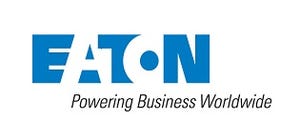Are Power Systems the Weak Link in Your Cybersecurity Strategy?Are Power Systems the Weak Link in Your Cybersecurity Strategy?
It is critical to maintain an end-to-end, holistic view of cybersecurity that encompasses every aspect of organizations' power systems.
February 28, 2022

As hackers continuously up their game ─ finding new ways to steal information and disrupt business functions ─ the ability to eliminate vulnerabilities has never been more critical. When it comes to developing a sound cybersecurity strategy, safeguarding power equipment may not always rank top of mind. Yet with hackers relentlessly exploiting new devices in criminally innovative ways, coupled with more employees working remotely than ever before, vulnerabilities are emerging at an unprecedented and accelerating rate.
For instance, global reliance on the Java Log4j library left IT departments around the world scrambling to patch or mitigate a vulnerability in December 2021. Just the latest in an ever-increasing series of malicious threats, the vulnerability forced nearly 4,000 federal, provincial and municipal websites throughout Canada to shut down for several days while IT staffs scanned for possible weaknesses. And with an estimated 4.6 billion global devices utilizing Java, it’s not a matter of if this will happen again, it’s when.
In fact, new research from U.S. cybersecurity firm Cyble revealed numerous online vulnerabilities within uninterruptible power supply (UPS) systems, data center infrastructure management (DCIM) applications, heating ventilation and cooling systems (HVAC), power distribution units (PDUs) and transfer switches. Warning that threat actors could monitor and manipulate these systems ─ potentially resulting in critical failures and outages ─ Cyble said it was able to perform a variety of actions, including altering the load and voltage of transfer switches, controlling UPSs and deleting logs, and retrieving and altering user credentials.
Why Power Systems Are Vulnerable to Hackers
Today’s world is more digitized, networked and connected than ever before, which can leave organizations vulnerable to attack. Connected devices and the vast amounts of data they generate create risks for companies of every shape and size, dramatically increasing the attack surface and number of entry points into a network. With so many employees now working remotely, information security and computer security have never been more critical.
In addition, the U.S. electric grid is becoming more vulnerable to cyberattacks, largely due to industrial control systems and the rise of distributed resources, according to research from the U.S. Government Accountability Office. Another assessment determined multiple hacking groups have the capability to interfere with or disrupt power grids across the United States, while the number of cyber-criminal operations targeting electricity and other utilities is on the rise.
As organizations attempt to juggle the challenges of shrinking budgets, mobile workforces and requirements to do more with less, they must also pause to consider the possible ramifications of a cybersecurity breach, such as potential costs and impacts to operations. There are numerous significant threats to a security breach ── including operational downtime, data loss, and impacts to safety, lifecycle costs and a company’s reputation — all of which can seriously impact customer loyalty and affect the bottom line.
How to Ensure Your Systems Are Safeguarded
While antivirus and malware software represent a starting point, it is critical to maintain an end-to-end, holistic view of cybersecurity that encompasses every aspect of an organization’s power system. Protecting your business against today’s ever-escalating cyber threats requires a multi-faceted approach, and because cybersecurity incidents can cripple an organization in minutes, customers need partners who are dedicated to the highest cybersecurity standards. Cybersecurity must be a consideration at all levels, including power management. Learn how Eaton can help you build a strong foundation designed to ensure operational success and safety in the wake of increasing cyberthreats.
James Martin is Global Connectivity Product Manager, Eaton.
This guest blog is part of a Channel Futures sponsorship.
About the Author
You May Also Like



